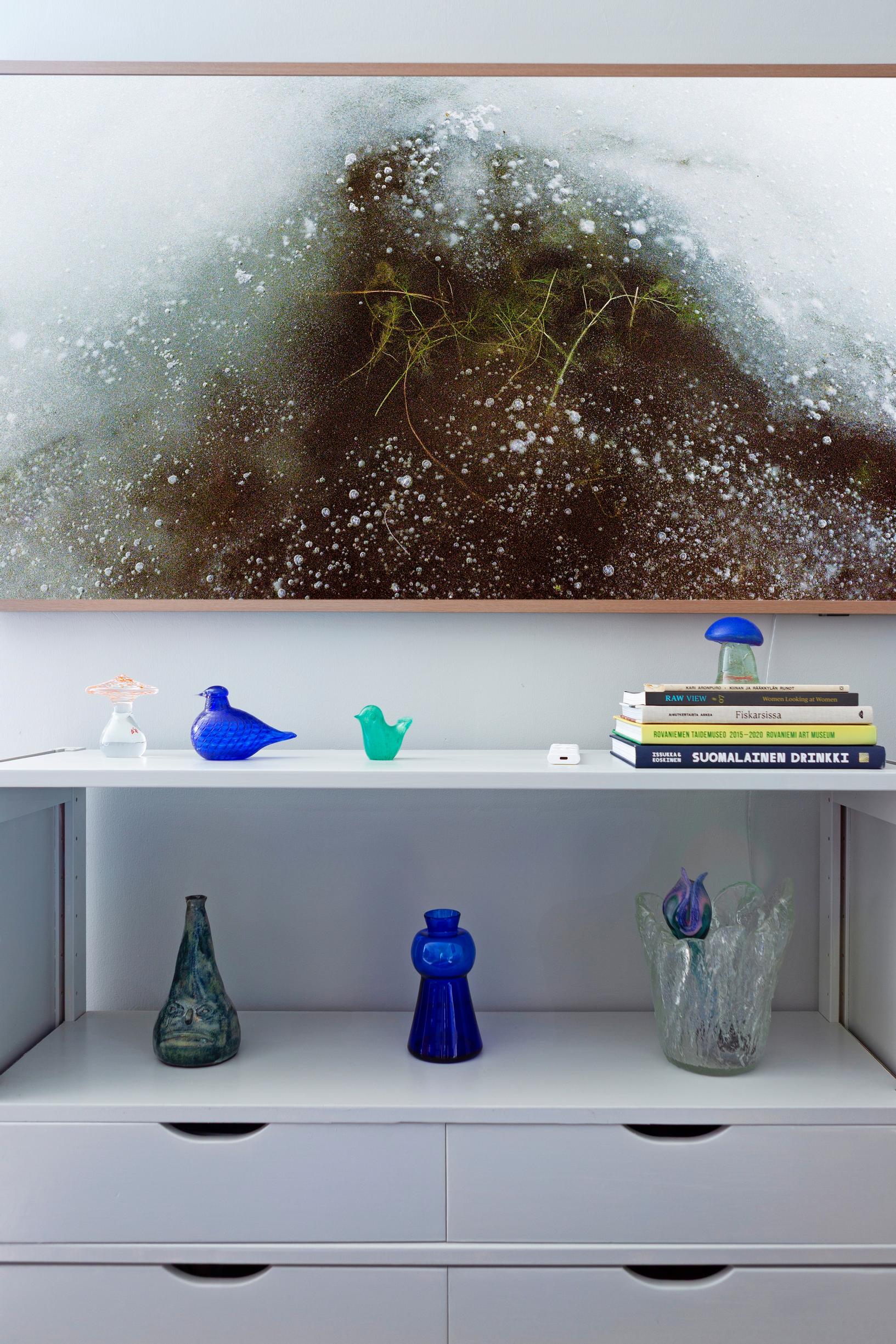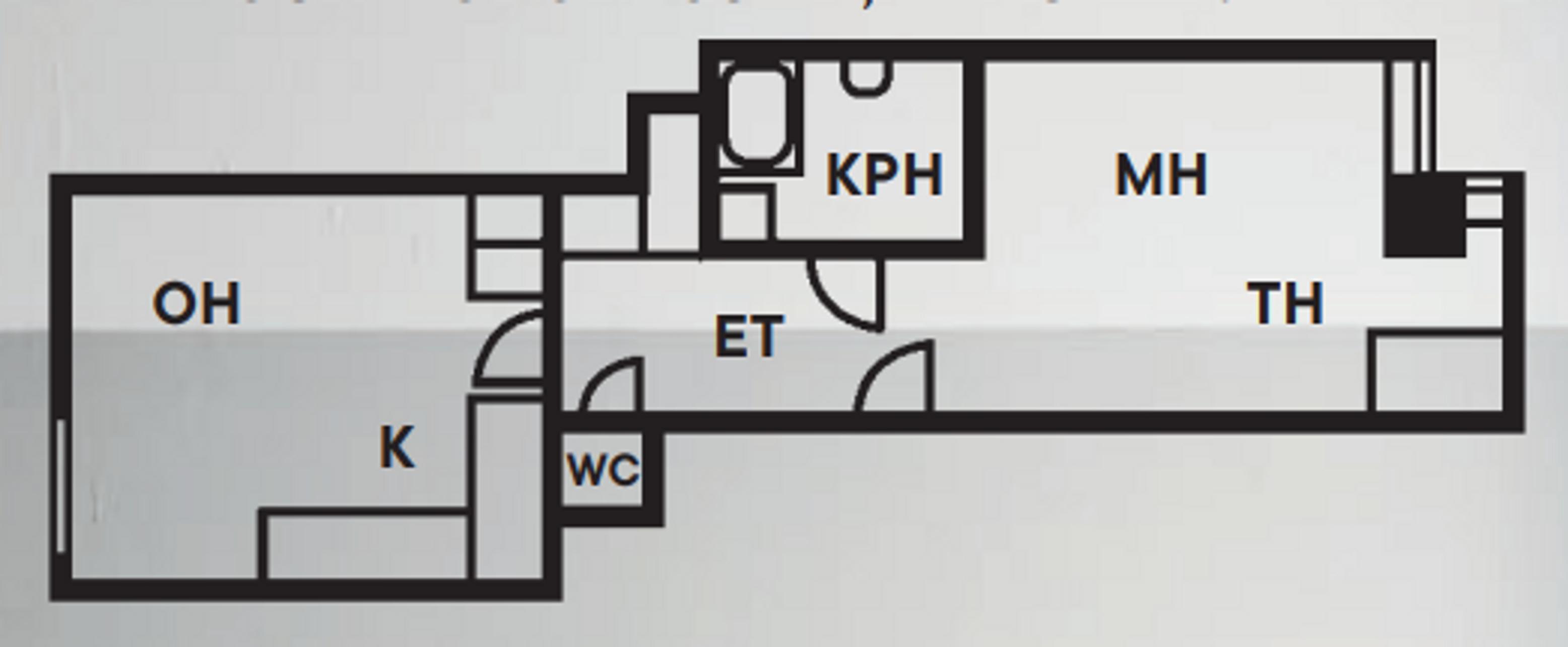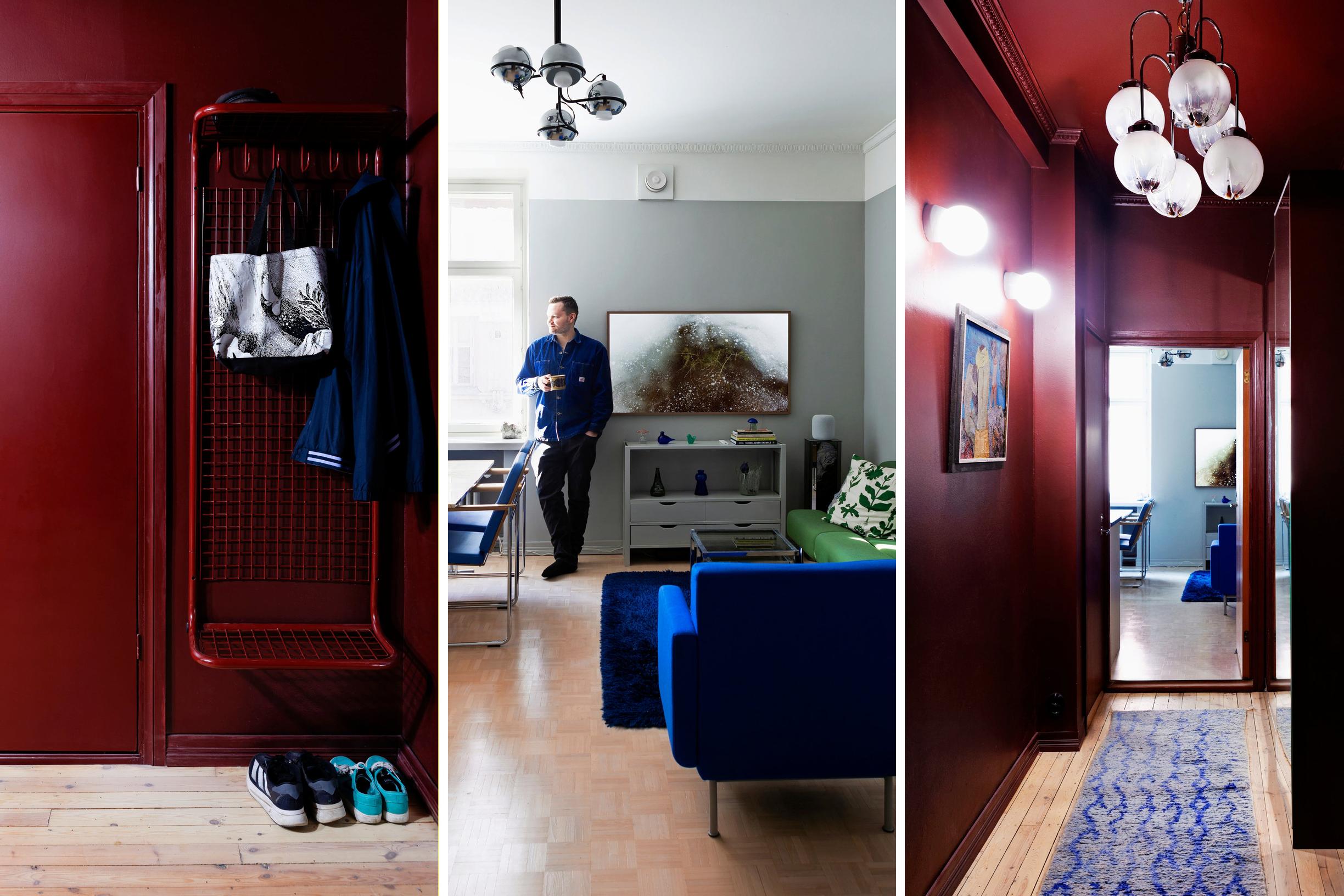
“That red entryway will rule out half the potential tenants”: how a bold color choice convinced Ville to keep the place for himself
“Many people assume my interior design style is expensive, but I actually make bargain finds.” Finnish photographer and designer Ville Lehvonen has renovated several apartments but only now has created a home just for himself. The furnishings from different eras coexist seamlessly in this clever two-room apartment.

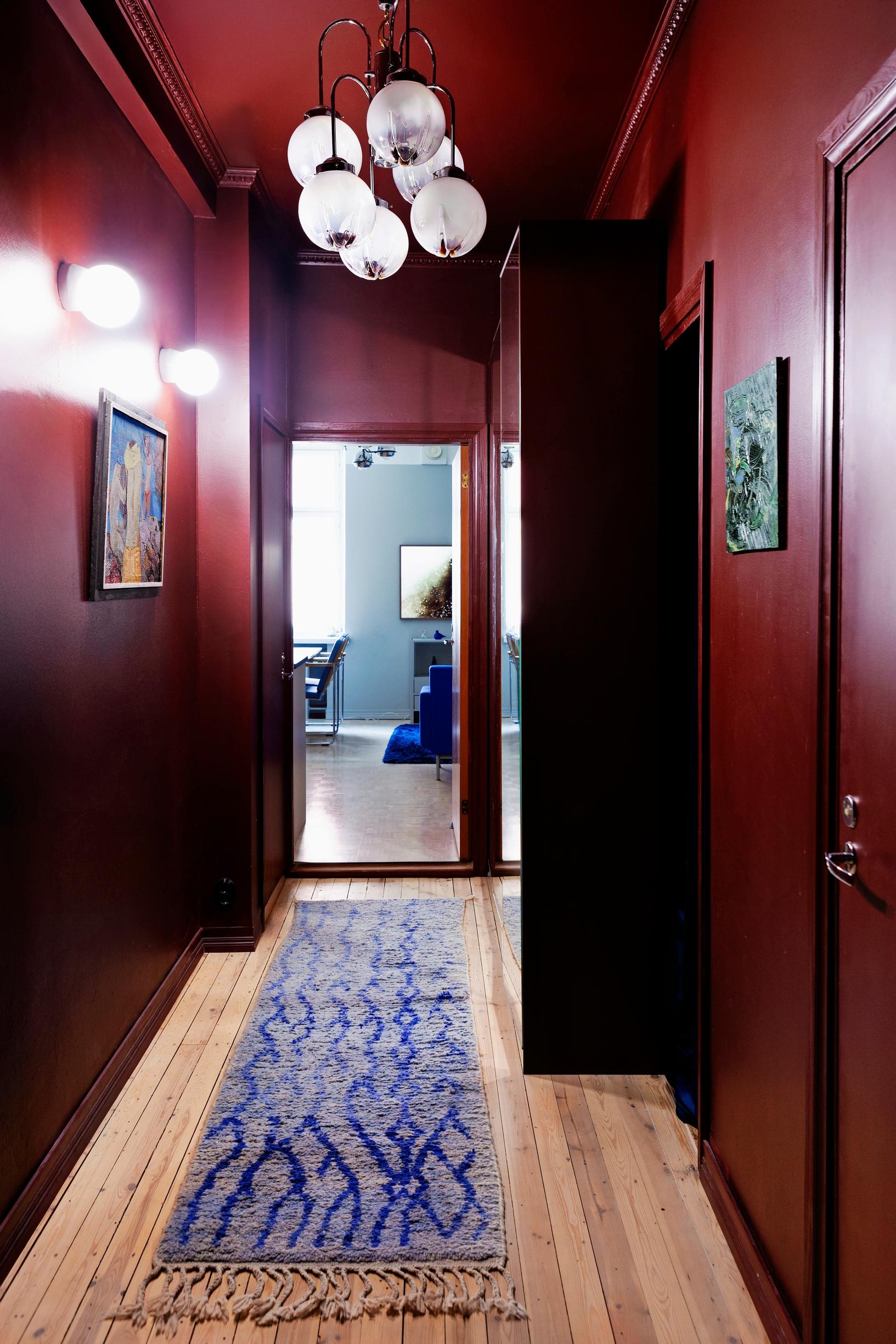
resident Photographer and designer Ville Lehvonen, 37.
home A two-room apartment in a 1929 brick building designed by architect Georg Nummelin in Helsinki’s Kallio neighborhood. The apartment is 53 square meters (570 sq ft).
Instagram: @omillakallioilla.

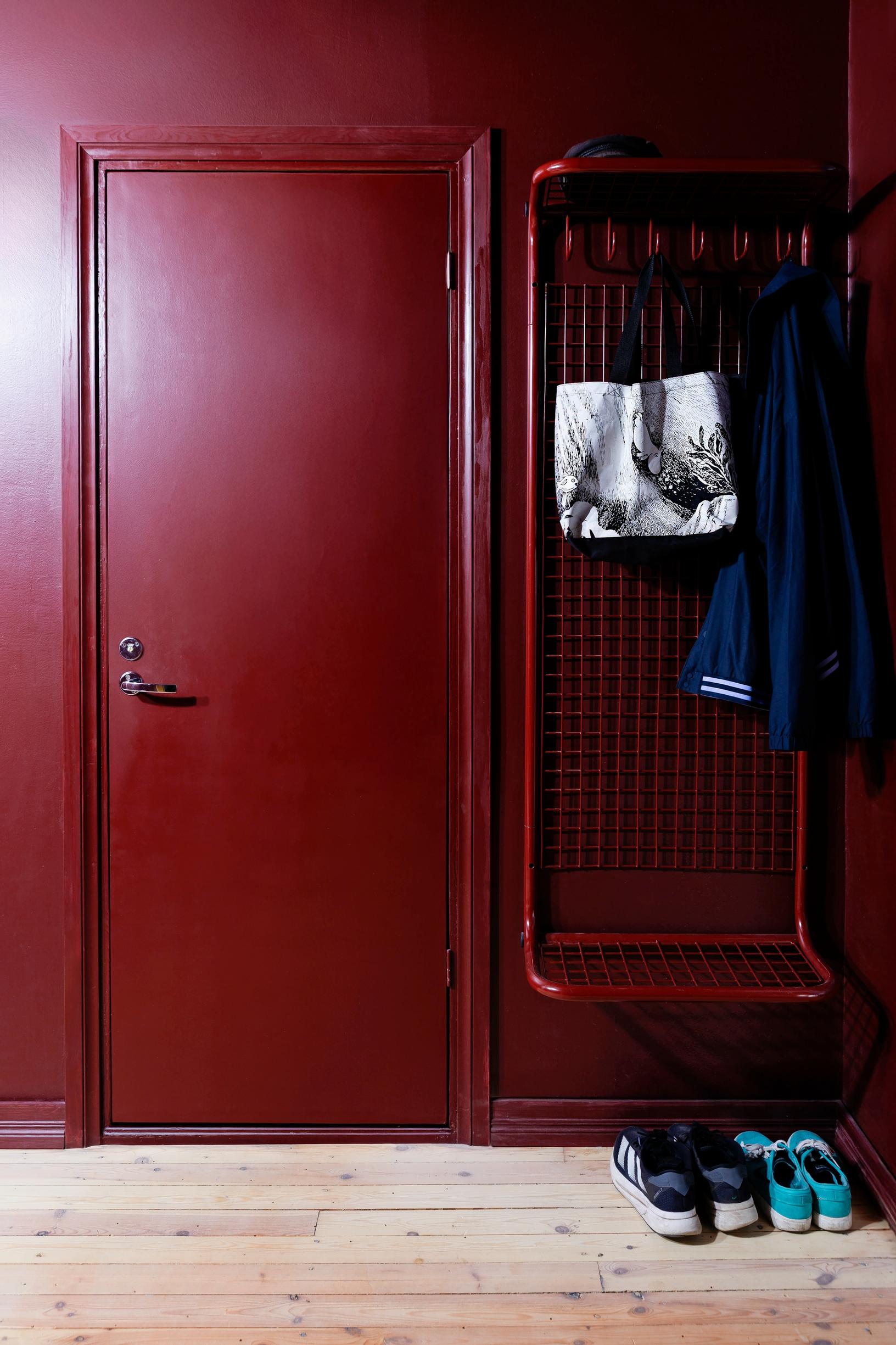
A friend’s words—“That red entryway will exclude half the potential tenants”—finally made Ville realize he’d been renovating the apartment for his own needs instead of for would-be renters. Once he understood he could do everything to his own taste, he shifted his plans for the renovation and décor.
Ville was born in North Karelia, in a log house built in 1908 on his family’s farm, and he has always loved the spirit and history of old buildings. He can’t imagine living in a new build without layers of stories from past decades.
As with his earlier rental properties, Ville focused his search in central Helsinki on apartment buildings from the early 1900s, with high ceilings, wide windowsills, and decorative ceiling rosettes.
In the Kallio neighborhood, near the Hakaniemi Market Hall, he discovered a two-room estate-sale apartment in need of renovation. It stood out from many options by being a through-apartment and had the bonus of a separate bathroom and toilet.

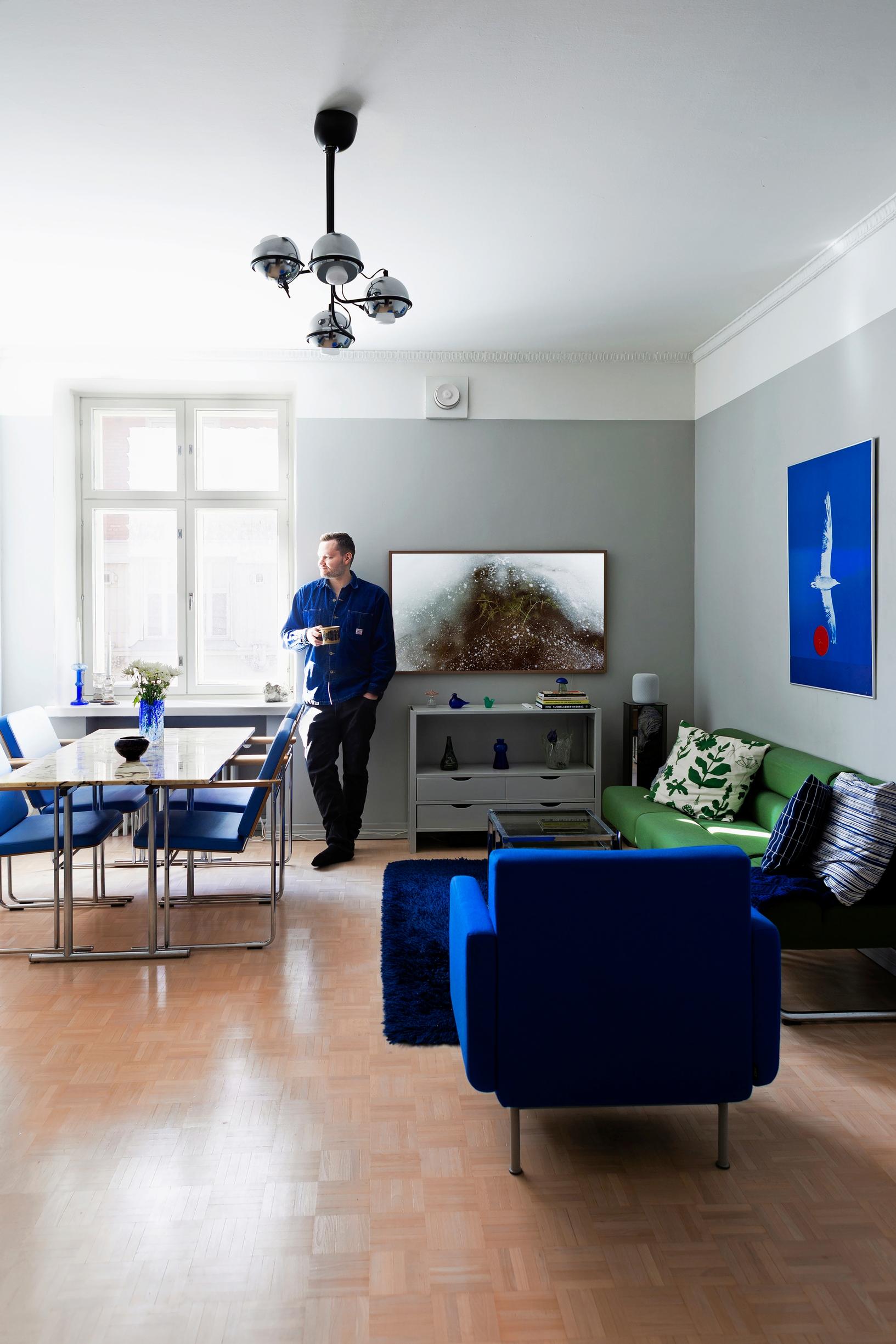

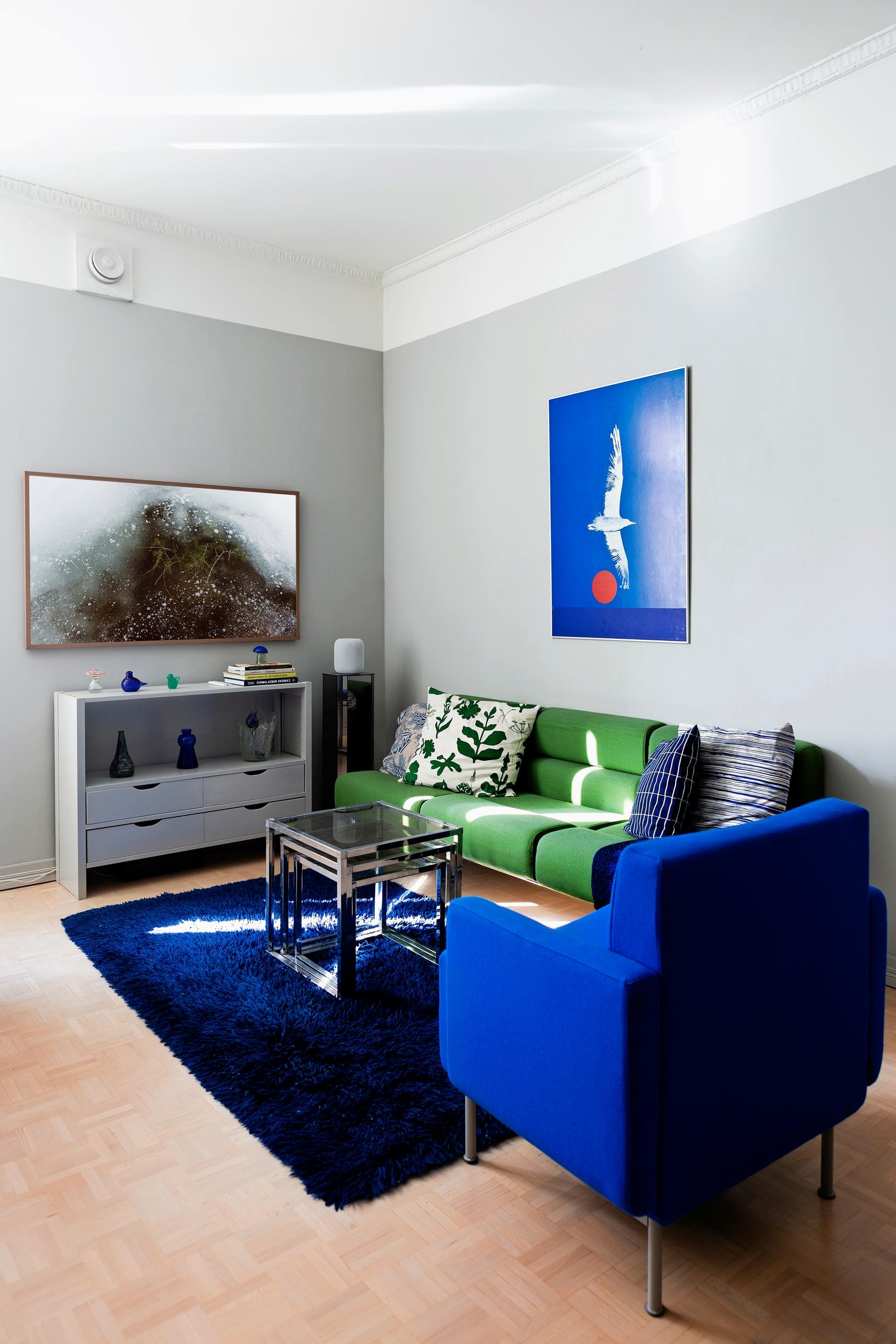

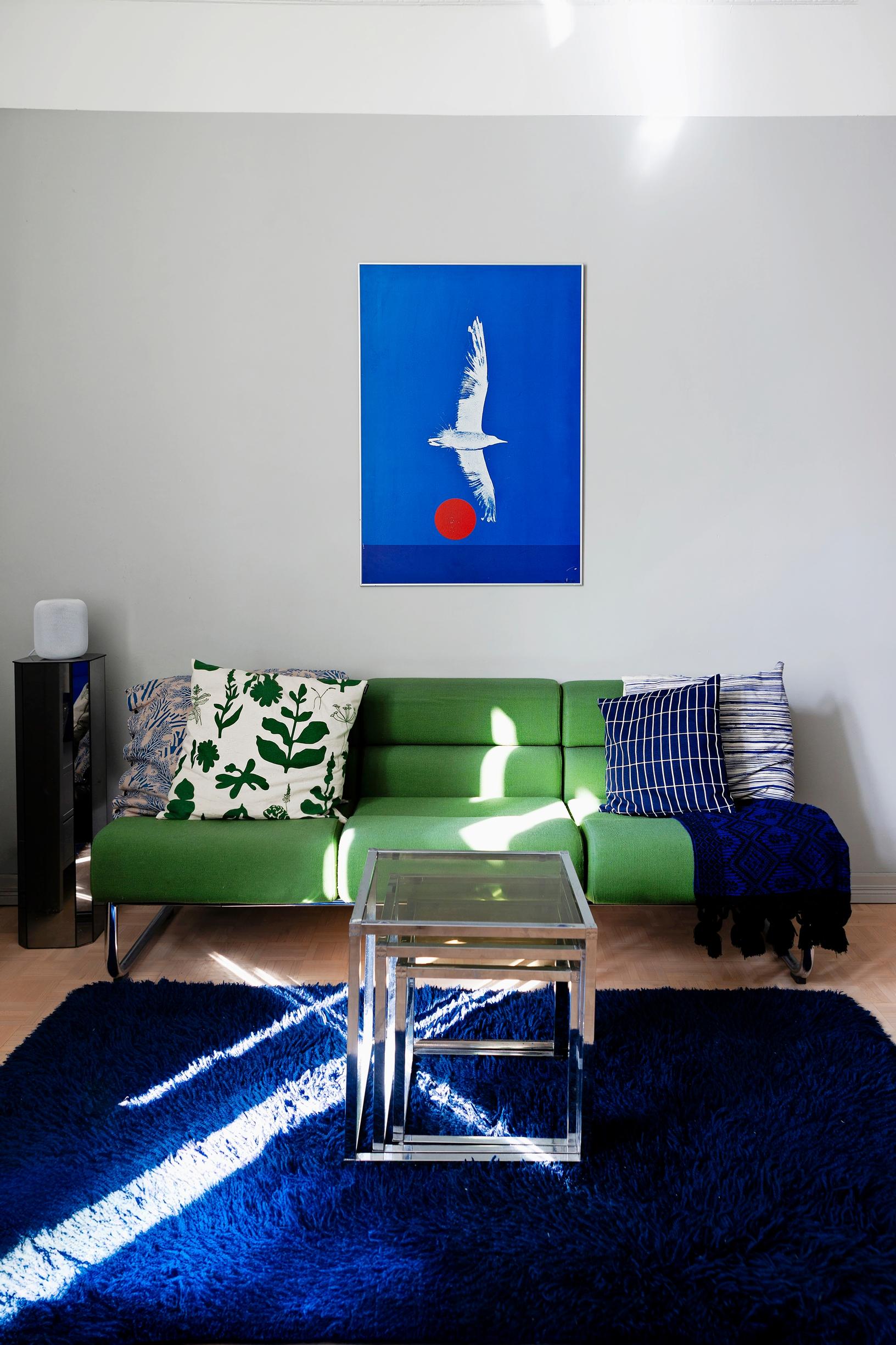
What did you do differently when renovating the apartment for yourself rather than as an investment?
The main difference was relocating the kitchen, which I did outside of the co-op’s plumbing renovation schedule for the first time. The new layout is more straightforward than the original: the living room and kitchen share one spacious area, and the quieter courtyard-facing room serves as both bedroom and workspace.
“In Finland, people often think that light surfaces bring brightness and a sense of space, but I wanted the area to be dark and dramatic.”
How did you choose all these incredible colors?
The long entryway at the center of the apartment is painted red from ceiling to floor. In Finland, people often think that light surfaces bring brightness and a sense of space, but I wanted the area to be dark and dramatic. The wall lights amplify the red glow for a gallery-like effect. By contrast, the living room and bedroom offer a neutral palette, serving as a calm backdrop for bold décor.
How did you preserve all the old elements in the apartment?
One of the first things I fell in love with was the 1960s wall cabinet with “cat’s paw” glass in the bathroom. I even included it in my purchase offer because I felt it truly belonged with the apartment, though the realtor found this amusing. During the renovation, I uncovered the original plank flooring, but I also decided to keep the later mosaic parquet—showcasing the apartment’s multi-era layering. I reused the porcelain-based sphere lamps from the storage space.

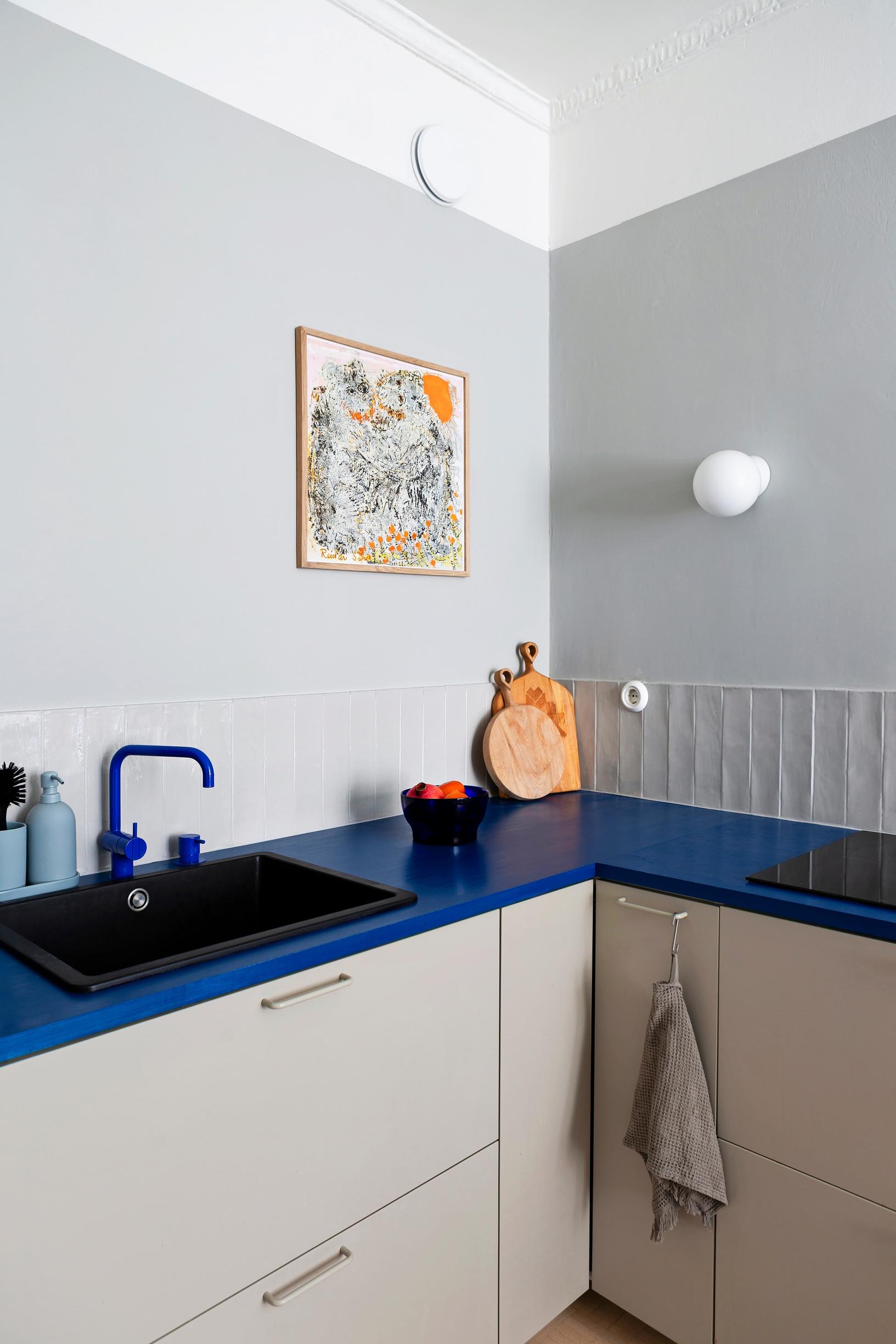

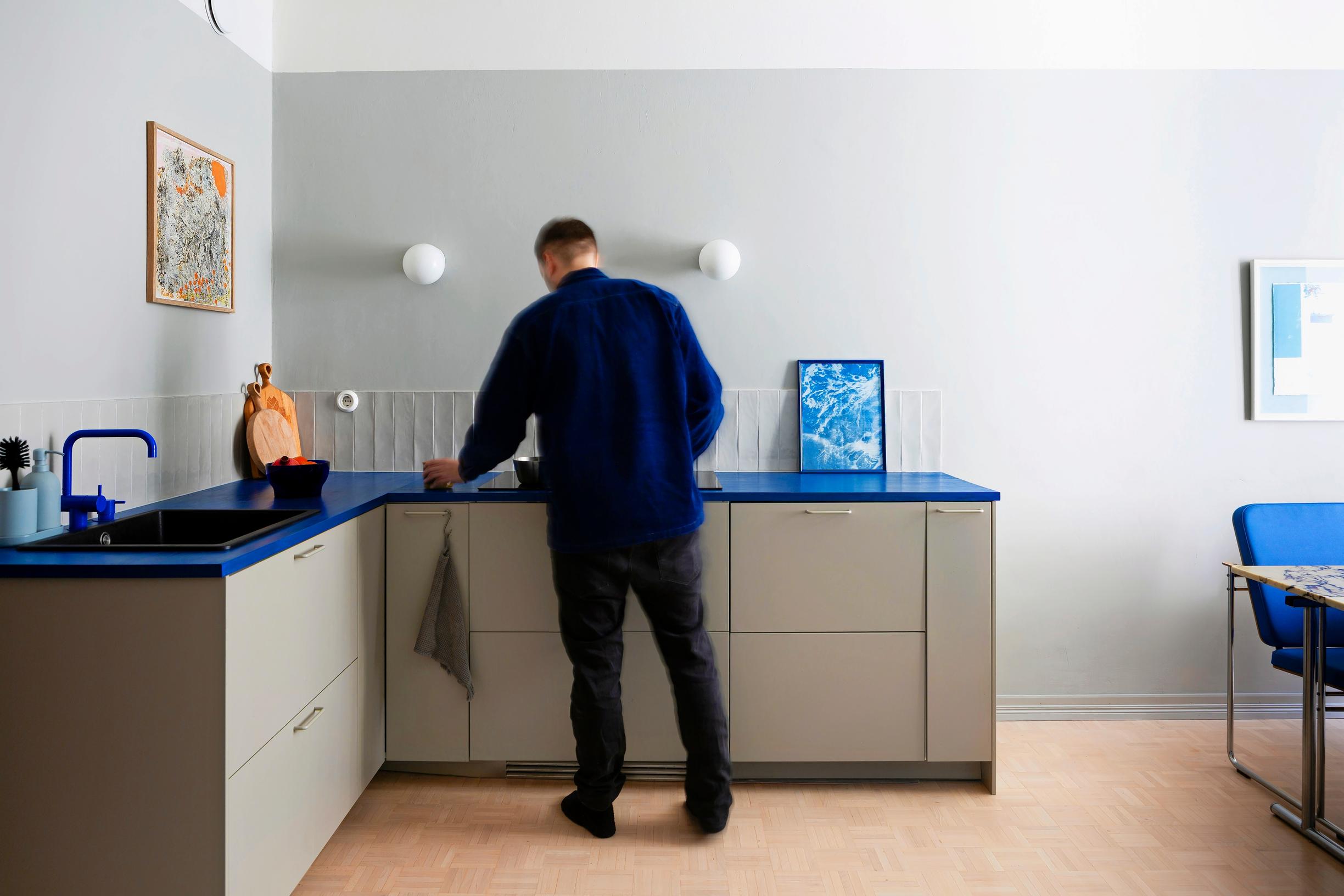

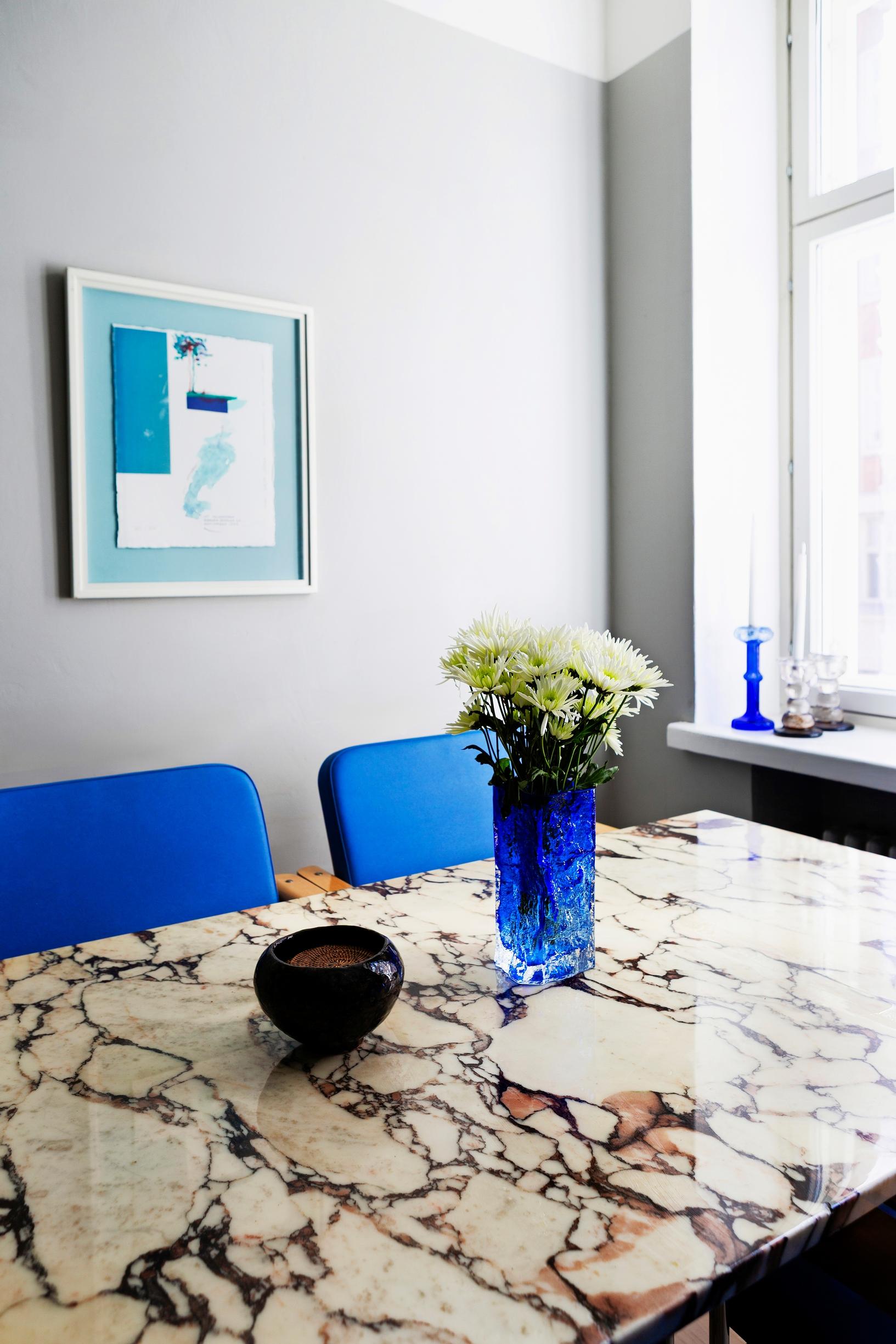
What did you particularly invest in?
I splurged on something as offbeat as a blue Vola faucet, even though it cost more than the kitchen cabinets, which I bought partly used and partly from a clearance sale. I also invest heavily in Finnish glass art, which I’ve grown to appreciate. In the past, I thought of it only as dust collectors.
What did you manage to save on, and how?
I built the kitchen countertops myself using inexpensive glued board, then coated them with a blue plant-based wax to hide the unattractive glued pattern. Because the bathroom renovation still awaits the co-op’s plumbing overhaul, I found a simple way to update the space by re-grouting the tiles and using vintage Finnish-made Pukkila tiles around the tub.
“I used to prefer earthy tones, but in recent years color has become part of my repertoire.”
Has your décor style changed over the years, and if so, how?
It has changed considerably. I used to go mostly for earthy tones, but over the last few years, I’ve introduced more color. Blue in particular calms me and reminds me of my childhood by Lake Saimaa and its islands. My style has broadened: I’ve moved on from strictly Artek to pieces from various decades, even some from the ’90s, which I once disliked.
Before the surface renovation and new fixtures, the bathroom looked like this:

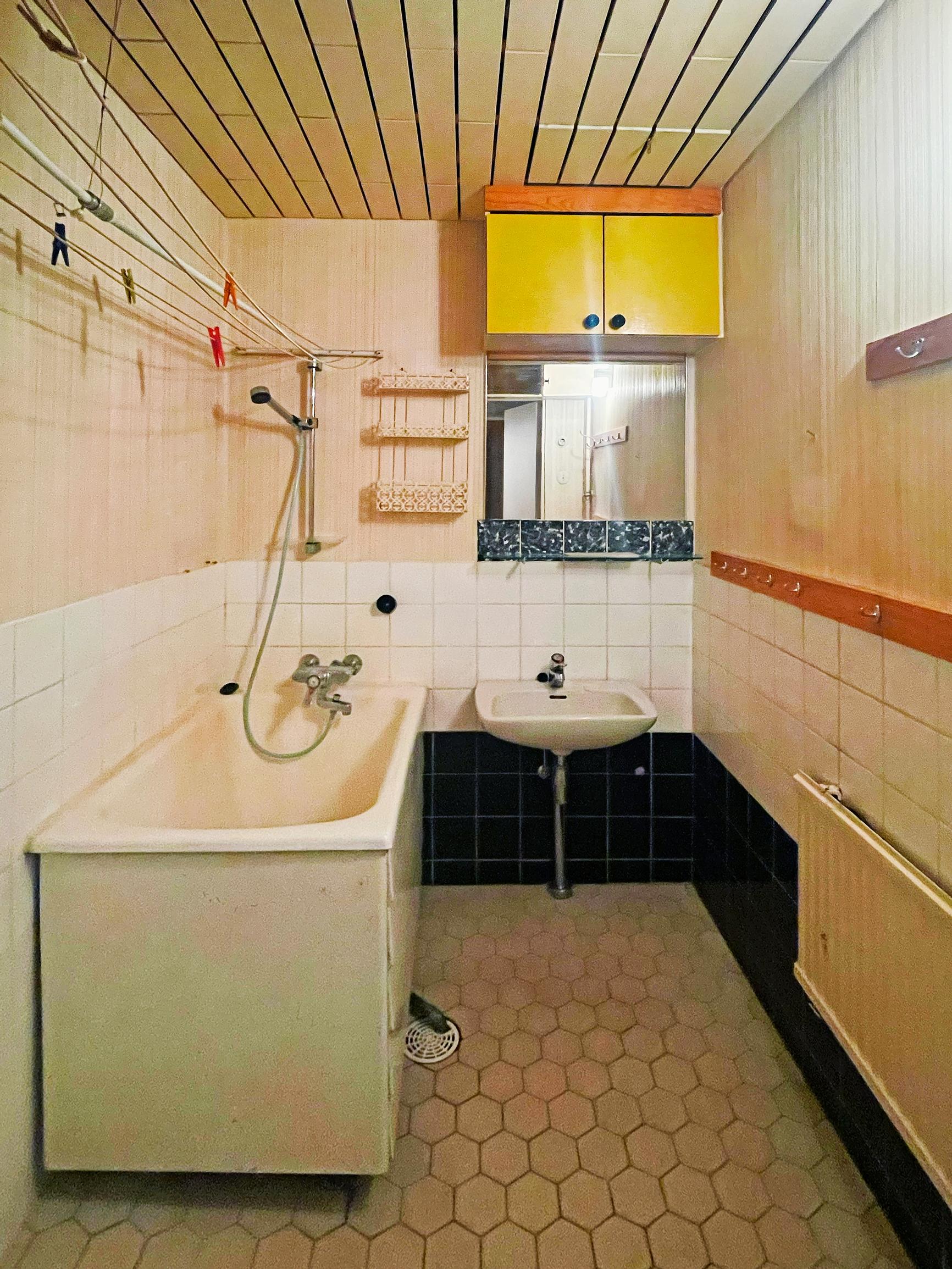



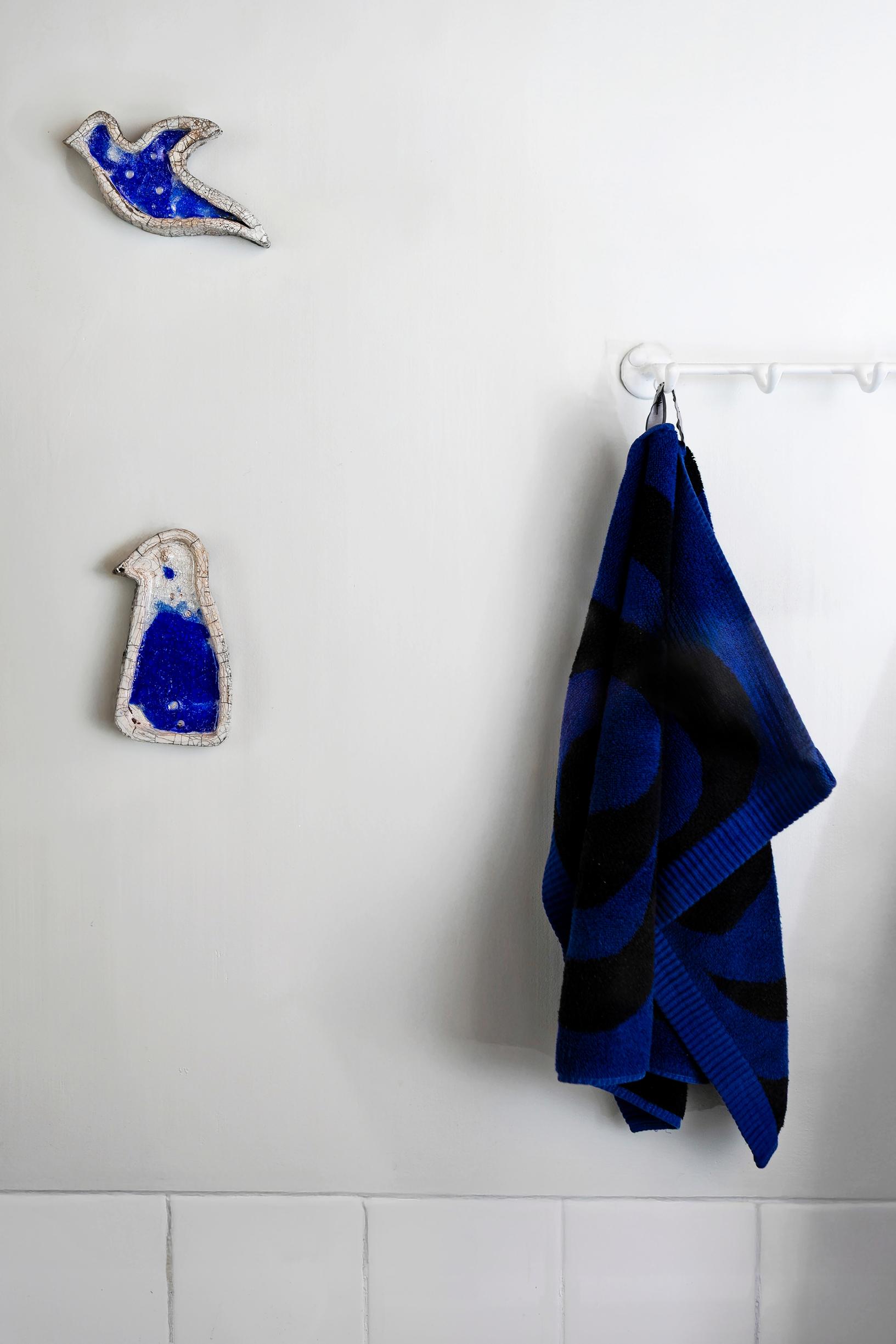

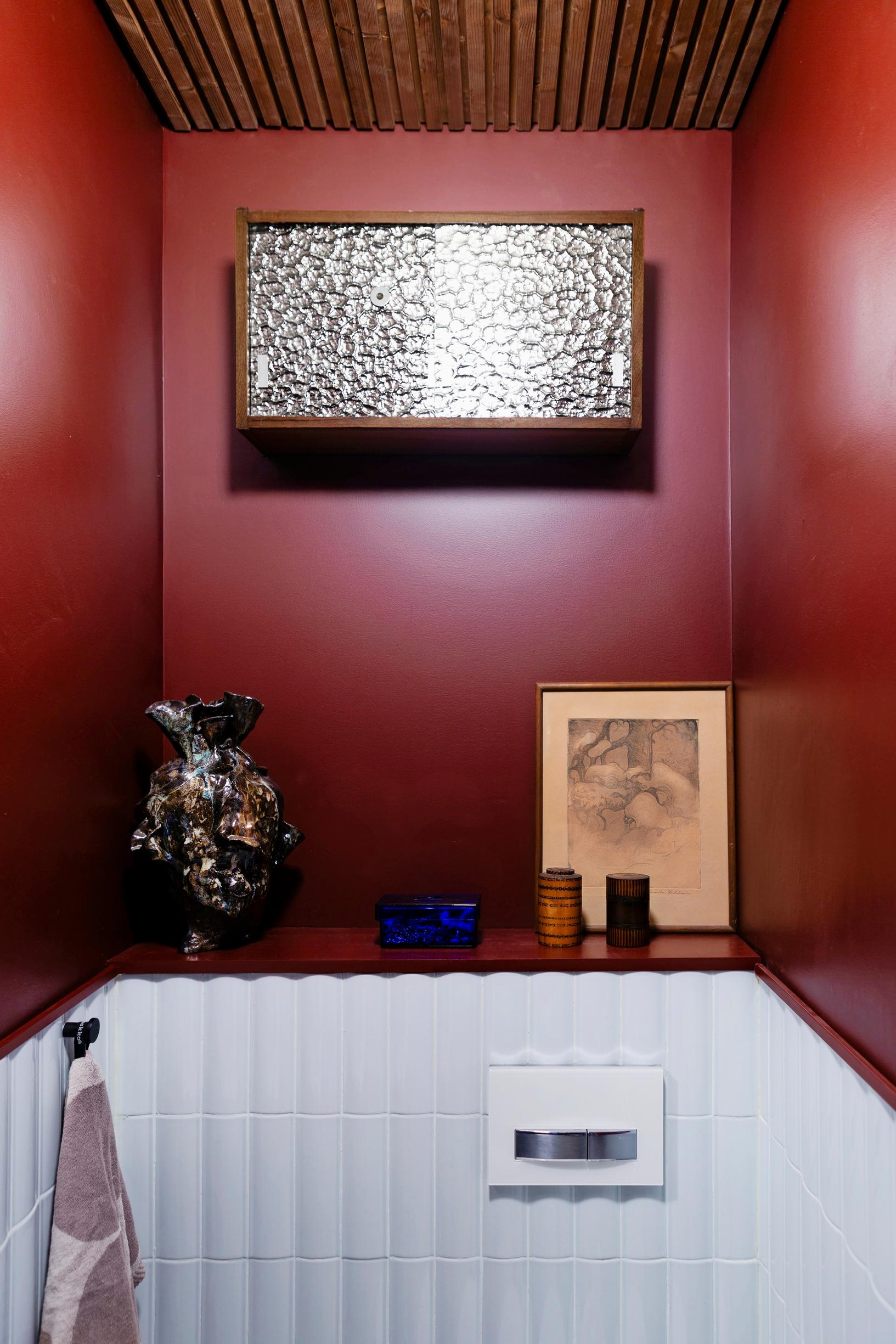
How does sustainable, secondhand-focused décor show up in your home?
I can honestly say at least 80 percent of my furniture and décor is secondhand. Many assume my style must be expensive, but I actually hunt for deals on the Tori online marketplace, at auctions, and at rural flea markets. The limited availability of items also encourages me to expand my tastes. For instance, I originally wanted Finnish Isku’s 1970s Funkis sofa in blue, but the green version I found was perfect for the living room corner.

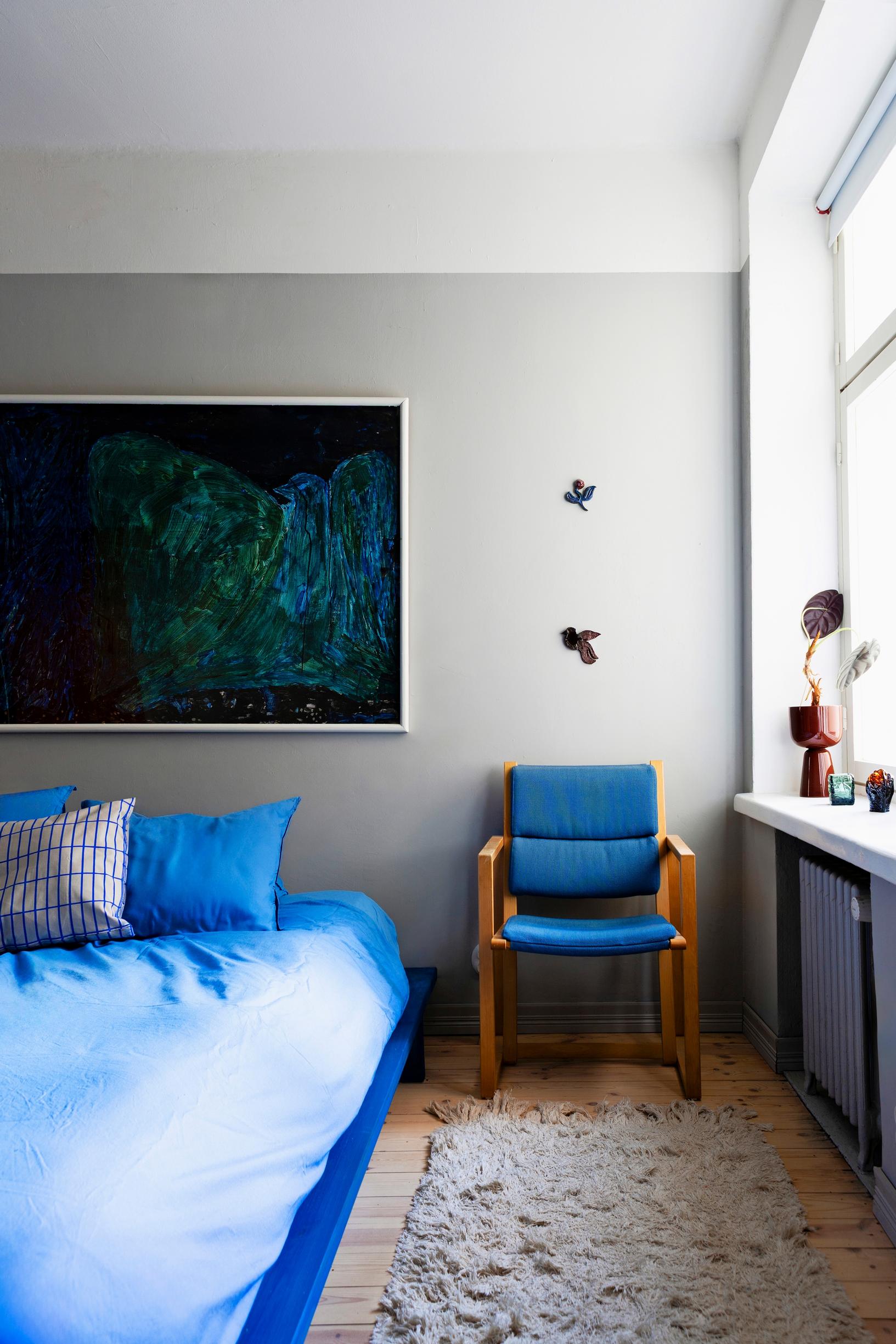

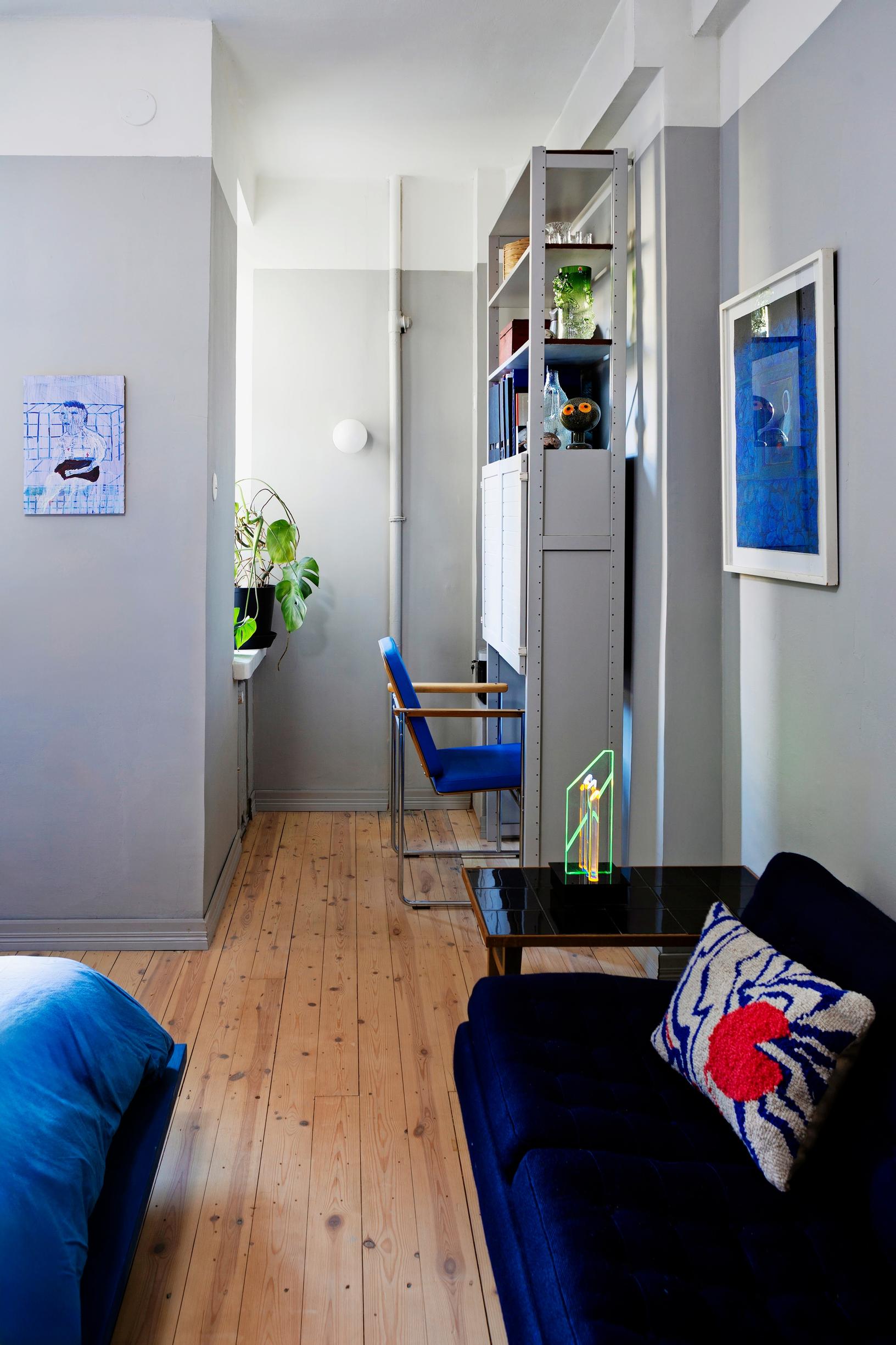
What role does art play in your home?
In 2019, I founded an international artist residency in Oravisalo, in my hometown of Rääkkylä, which deepened my respect for art. Every room in my home has art, including the bathroom and toilet. Art feels much more personal when you know the artist behind it.
What’s the best thing about your home?
As a photographer, light is essential to me. I love lingering over my morning coffee in the kitchen as the sunlight sets the glassware and brass surfaces aglow.

